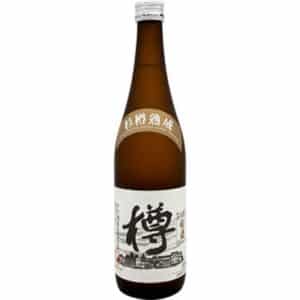Sake… It’s that booze the hibachi chef shoots into your mouth from across the grill with uncanny accuracy between onion volcanoes, right? Or maybe it’s just the stuff that gives its name to those Sake bombs people liked to order in college. Or… it’s a subtly complex, seriously misunderstood fermented beverage that the Japanese perfected long before European beer was anything more than unintentionally sour, muddy sludge they had to drink because water made them sick. Sake deserves better, and you deserve to be the smarty-pants in your group the next time you go out for sushi.
Though it’s sometimes referred to as “rice wine,” Sake is closer to beer – starch in the rice is converted into sugar, which then undergoes fermentation – instead of fermenting sugar that’s already present, as it is with wine. In Japan, only hardier varieties of rice are used, since it must go through polishing to remove the tough outer layer of bran, and some varieties will break apart in that process. The more heavily the grain is polished, and the closer it gets to the shinpaku – the starchy core of the grain, the more high-quality (and more expensive) the result. As with beer, water quality is the secret weapon – mineral-rich hard water is used for making drier Sake, softer water is reserved for sweeter styles, and pH is critical – using the wrong type of water can have a catastrophic effect depending on which type of koji (sake yeast for fermentation) is used. But enough of that, how does it taste?
A higher-grade Junmai or Junmai-Daiginjo sake should be served lightly chilled, like white wine. The delicate floral, tropical, and umami flavors of high-grade Sake would be lost by serving it hot. About that: Sake can be served chilled, room temperature, or heated, depending on preference, the characteristics of the style, or the season, but hot Sake is typically a winter drink, using lower-grade Sake.
With such an incredibly complex history and methodology, there’s no way to not pass over a ton of critical information, but for our purposes, we’re going to highlight a handful of in-store favorites that also encapsulate the properties of their representative styles…
“Born Gold” Junmai Daiginjo – A perfect example of a high-grade Sake, with subtle, delicate notes of honeydew melon and pear. Pair lightly chilled with Sashimi – the subtleties of both the dish and the sake create an amazingly delicate balancing act.
Kiuchi Kikusakari Tarusake – AKA craft beer brewery Hitachino! Tarusake is a style of Sake that is aged in cedar casks. The presence of the wood registers mostly in the finish, with distinctive umami, and that savory component makes it an ideal for pairing with roasted eel, miso, or even katsu curry!
Kiuchi Awashizuku – This Sake balances sweetness with bright acidity and natural carbonation! An easy-drinking introduction to the world of Sake that pairs well with everything!
Kikusui “Perfect Snow” – Nigori Sake is completely unfiltered, and often has some residual sugar, which makes it an ideal drink for pairing with dessert, or as an after-dinner drink. The name is no joke – this is like a blizzard in a glass!
By Tom Breeding, Beer Director
-
BORN GOLD JUNMAI DAIGINJO SAKE$39.99
-
KIUCHI TARUSAKE$24.99
-
KIUCHI AWASHIZUKU SPARKLING SAKE$9.99
-
KIKUSUI PERFECT SNOW 300ML$11.99










